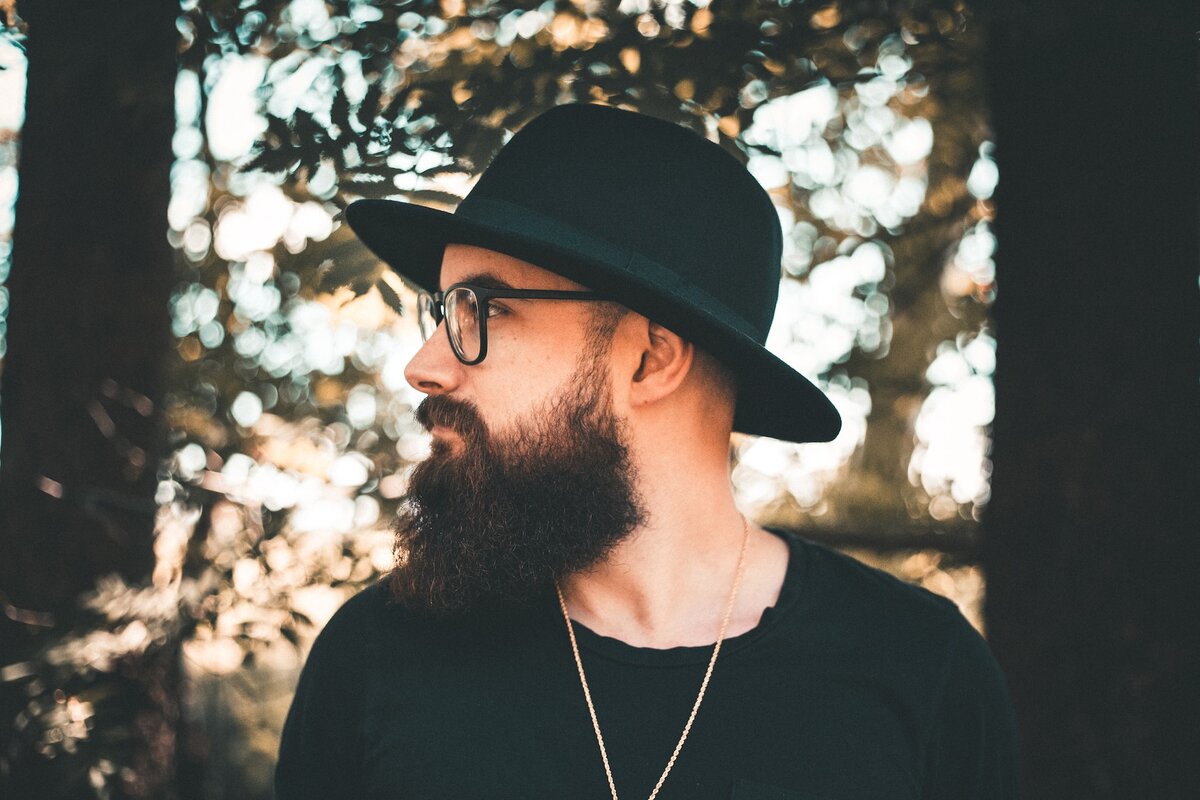Beards are more than just facial hair. They carry a story, a history, and a biological purpose. From the rugged scruff of a few days to the full glory of a yeard, beard facts not only shape men’s faces but also their identities. Let’s delve into the roots of beard growth, understand the care they demand, and uncover the influences they have on society and health. Join us as we explore the intriguing world of beards, a topic that has fascinated cultures around the globe for centuries.
On this page:
Historical Beard Facts Through the Ages
In ancient civilizations such as Egypt, royalty wore false beards as a sign of sovereignty and godliness, with the pharaohs donning metal-made beards to assert divine authority. In stark contrast, in ancient Greece, a full, natural beard was celebrated as a hallmark of wisdom and virility. Philosophers like Socrates and Plato wore their beards proudly, as a visual testament to their intellect and maturity.
In the Middle Ages, touching another man’s beard was a sign of aggression and could even be grounds for a duel, highlighting the beard’s significance as a personal honor. By the time of the Renaissance, beards had become a canvas for expression among European nobility, with elaborate styles reflecting a man’s wealth and social rank.
However, the tide turned in the 18th century when Peter the Great of Russia instituted a beard tax to modernize society by Western standards, illustrating how beards could also symbolize resistance to change. The pendulum swung back in the American Civil War era, where beards like Abraham Lincoln’s became icons of leadership and moral fortitude.
The Science of Beard Growth: Beard Statistics Unveiled
At its core, beard development is steered by genetics and hormones, primarily testosterone and dihydrotestosterone (DHT). These hormones are like the fuel that powers the engine of beard growth.
Starting at puberty, testosterone levels rise, and the body starts converting some of this testosterone into DHT. The sensitivity of hair follicles to these hormones is what dictates beard thickness and growth patterns. This sensitivity is etched into a person’s DNA—so beard facts state if your father or grandfather could grow a lush beard, there’s a good chance you can too.
Genes play a pivotal role in the texture, density, and color of your beard. For example, the AR gene provides instructions for making a protein called an androgen receptor. Androgen receptors allow the body to respond appropriately to dihydrotestosterone and other androgens. Variations in this gene can lead to differing beard growth among individuals.
Another aspect of genetics is the distribution of hair follicles on your face. Some men have densely packed follicles, leading to fuller beards, while others have sparser follicles. Ethnicity can influence these traits—men of Mediterranean descent, for instance, often have thicker and darker beards compared to men from other regions.

It’s also worth noting that while genetics set the potential for your beard, health and lifestyle factors can influence how well your beard actually grows. Proper nutrition, exercise, and sleep can help maximize your genetic beard-growing potential.
Beard Maintenance and the Importance of Proper Care
Maintaining a beard goes beyond just letting facial hair grow. Healthy beards require consistent care, much like the hair on one’s head. A key factor in beard fun is keeping it clean. Washing a beard helps to remove daily buildup of dirt and oils, and using a gentle shampoo can prevent the skin underneath from becoming irritated.
Hydration is also vital for a beard’s health. Just as a person might use a conditioner on their scalp hair, a beard conditioner or a beard oil can keep facial hair soft, shiny, and manageable. These products also often contain ingredients that can soothe the skin and may help to reduce itchiness, which is a common complaint among those growing out their beards.
Combing and trimming are also important in beard care. Regular combing helps to train the hair to grow in a desired direction and can help prevent tangles and knots. Meanwhile, trimming helps to maintain a beard’s shape and remove split ends. Whether one prefers a rugged look or a more polished appearance, keeping the edges neat can make a significant difference in how the beard complements the face.
For those with longer beards, food can become an unexpected issue. Small food particles can sometimes get caught in the hair, so it’s wise to pay attention while eating and to check the beard afterward. A quick comb through or a rinse can keep a beard looking clean and presentable.
Proper care is essential not only for the look of a beard but also for the health of the skin beneath. Neglect can lead to dryness, irritation, and even beard dandruff, which is why adopting a routine for beard maintenance is crucial. A well-kept beard can be a reflection of personal grooming habits and can greatly contribute to a person’s overall appearance.
How Beards Influence Perceptions and Social Impressions
Beard statistics have shown that bearded men are often perceived as more mature and as having higher social status. This perception could tie back to historical beard facts where beards were seen as symbols of wisdom and leadership.
Interestingly, beards can also affect how trustworthy someone is thought to be. Studies have found that while light stubble is often associated with being the most attractive, full beards seem to exude a sense of trustworthiness and expertise. This could be why in certain professions, such as academia or law, a beard may add to an individual’s perceived credibility.
On the flip side, there are nuances to these perceptions. For instance, a well-groomed beard might suggest conscientiousness and attention to detail, whereas an unkempt beard might suggest the opposite. This is crucial in social settings as first impressions are often formed within seconds, and facial hair can play a part in that process.

However, cultural context is vital. In some societies, beards are seen as a sign of virility and strength, while in others, they might be associated with neglect or non-conformity. The way a beard influences perception also varies with age, as younger individuals might view beards differently compared to older ones.
In the professional realm, a beard can impact employability and job prospects, with some industries favoring bearded individuals and others preferring a clean-shaven look. It’s clear that the social implications of wearing a beard are complex and can’t be pinned down to a single attribute. As such, the decision to grow a beard can be a strategic one, depending on the social and professional signals one wishes to send.
The Surprising Health Benefits of Sporting a Beard
One surprising benefit is that beards can block up to 95% of the sun’s harmful UV rays, according to a study published in the journal Radiation Protection Dosimetry. This means a lower risk of sunburn and, over the long term, less chance of developing skin cancer on the face, especially on areas covered by facial hair.
Beards also help retain moisture in the skin. They act as a barrier against wind and cold air, reducing the likelihood of dry and cracked skin. Beard facts include that by keeping the area under the beard relatively warm and stable, beards can help reduce symptoms for those who suffer from cold-induced conditions like chapped lips or skin.
Having facial hair might mean fewer acne breakouts. Shaving can spread bacteria across your face, and the act of shaving itself can cause cuts and ingrown hairs, which can lead to acne. By not shaving, you avoid this and keep your skin smoother and clearer.
Another health perk is related to allergies. Beards can function like a filter, trapping dust and pollen before they enter your respiratory system. This can potentially reduce allergy symptoms and contribute to better breathing.
Sporting a beard might even help with longevity. According to a study by the University of Southern Queensland, a beard can help keep facial skin youthful for longer, potentially slowing the aging process. The protection from the elements means fewer age spots and a reduced rate of wrinkling.
Beard Styles and the Art of Personal Expression
From the full, bushy lumberjack to the sleek, sculpted goatee, each style carries its own flair and message. The choice of beard style can reflect one’s personality, profession, or even pay homage to cultural roots.
Beard facts reflect that the classic full beard, for example, is often seen as a symbol of ruggedness and has been popularized by figures in media and sports. It’s a style that requires patience during growth and maintenance but offers a bold statement. On the other hand, the Van Dyke beard, characterized by a detached mustache and goatee, exudes an air of sophistication and has historical roots in 17th-century Europe.
For those who prefer something less full, the stubble beard achieves a balance between a clean-shaven look and a full beard, suggesting a casual yet put-together appearance. This low-maintenance style is appealing for its ease and speed of growth, making it a popular choice for many.
Creative beard styles, such as the handlebar mustache integrated with a chin strap beard, allow for a playful and artistic approach to facial hair. The intricate lines and curves require precision and can showcase a person’s attention to detail and patience.
The choice of a beard style can also be a form of non-verbal communication, signaling membership in a particular group or subculture, or even an act of defiance against conventional standards of grooming. For instance, some men grow beards to align with a hipster or counter-culture identity, where the beard is a key element of the overall aesthetic.
Economic Advantages of Having a Beard
Think about it – beards require far fewer products and tools compared to the daily ritual of shaving. No more razors, shaving cream, or aftershave to buy on a regular basis. That’s a direct saving right there. In fact, the average man spends between $111 and $225 per year on shaving products. Beards, however, only require the occasional trim, which can often be done at home with a good pair of clippers.
The time spent maintaining a beard is significantly less than the time spent on daily shaving. This saved time can translate into economic benefits too. Less time grooming means more time that can be devoted to activities like work, where time literally equals money.
In the professional sphere, there’s evidence suggesting that beards can also influence earning potential. A study by the Journal of Business and Psychology found that men with beards were perceived as having more expertise and trustworthiness – traits that could lead to better job opportunities and the potential for higher salaries.
For those in creative fields, a beard can be part of a personal brand that differentiates you from the competition. This unique personal style can catch the eye of potential clients and employers, potentially leading to more business and, consequently, an improved financial situation.
The Global Beard Renaissance and Its Cultural Impact
In recent years, the beard has made a striking comeback, sparking what many refer to as the Global Beard Renaissance. This resurgence isn’t just about personal style; it’s a cultural movement that’s influencing fashion, media, and even reshaping social norms around masculinity.
The beard’s return to prominence, backed by beard facts, can be seen worldwide, transcending borders and cultural divides. In cities from Brooklyn to Berlin, men are embracing their facial hair with newfound enthusiasm. This shift has given rise to a burgeoning industry dedicated to beard care, including oils, balms, and grooming tools, which have become staples in men’s personal care routines.
The cultural impact is significant, with beards now a fixture in professional environments where they were once considered taboo. They’ve become a symbol of confidence and maturity, altering how men are perceived in both personal and professional settings. This change is most notable in creative industries, where beards are often seen as a mark of individuality and non-conformity.
Beards have also found their way into mainstream media, with bearded characters becoming common on television and in movies. This visibility has helped normalize beards in everyday life, presenting them as an option for any man, regardless of profession or lifestyle.
The beard’s popularity has fostered a sense of community. Online forums and social media groups dedicated to beard culture offer men a space to share tips, provide encouragement, and celebrate diverse beard styles. This sense of community extends to charitable causes, with events like “No-Shave November” raising awareness and funds for health issues like cancer.
Modern Society Embraces Beard Fun
Beards have woven their way through history, culture, and style, emerging as symbols of wisdom, power, and masculinity. Modern society has embraced this natural accessory, recognizing its potential to shape perceptions and express individuality. With the knowledge of proper beard care and an understanding of the health benefits, men can wear their beards with confidence. As we acknowledge the economic and social nuances of beard culture, it’s clear that the beard is more than just facial hair; it’s a statement, a form of art, and a nod to our ancestors. Embracing the beard today means connecting with a rich tradition while fashioning personal health and style narratives for the world to see.
